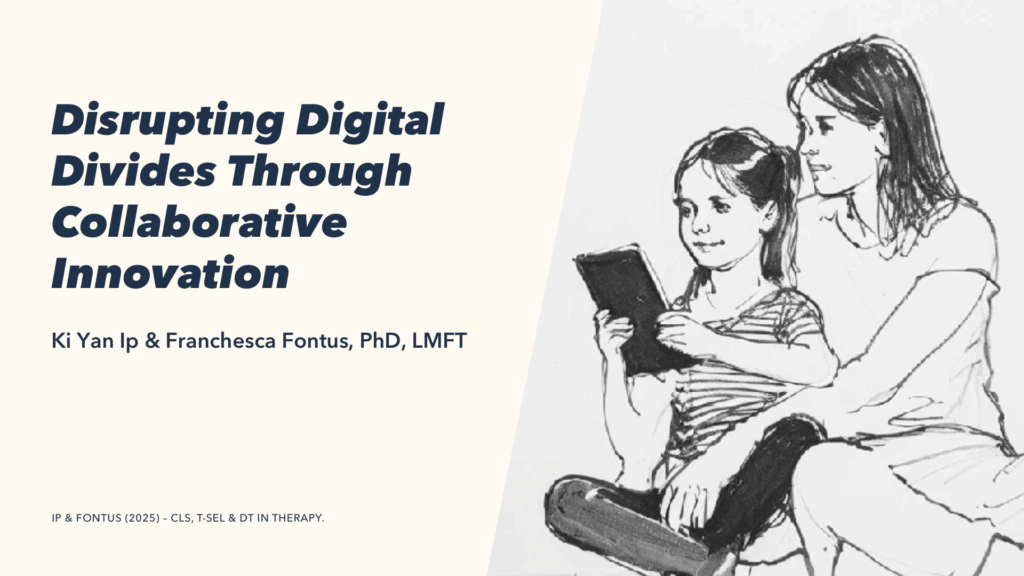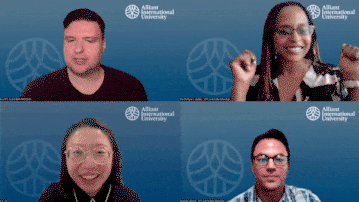Blog
"Disrupting Digital Divides Through Collaborative Innovation"

In February 2025, I gave my first conference presentation while also serving as co-chair of the CFT Spring Conference. It was a big day, part professional milestone, part team effort to host an event that brought students, faculty, and community members together. My talk, “Disrupting Digital Divides Through Collaborative Innovation,” explored how therapists, educators, and families can work together to bridge technology gaps in ways that strengthen relationships.
Technology can be a lifeline, but it can also create misunderstandings, increase stress, and widen generational gaps. In my work as a Marriage and Family Therapy student, I’ve seen how these issues show up in everyday family life, from mismatched communication styles to conflicts over device use. This presentation was my way of exploring practical, relationship-focused solutions.

Why This Topic Matters
The “digital divide” isn’t just about who has internet access. It’s about how technology is used, understood, and integrated into daily life. When caregivers and children experience technology differently, it can impact trust, connection, and emotional safety. Addressing this gap means looking beyond devices and into the ways we communicate and problem-solve together.Key Ideas from My Presentation
- Collaborative Language Systems (CLS): Creating space for every voice at the table through open, curious dialogue.
- Transformative Social Emotional Learning (T-SEL): Building empathy, trust, and self-awareness into how we approach digital challenges.
- Design Thinking (DT): Using creativity and empathy mapping to design solutions that meet families where they are — whether that means low-tech options or privacy-conscious tools.
- Equity and Access: Bridging digital divides is also about fairness and ensuring solutions are accessible to families with different needs and resources.
Reflections
Presenting at the CFT Spring Conference wasn’t just a speaking opportunity; it was a chance to connect with others who care about equity, connection, and innovation in family work. If I could do one thing differently, it would be to leave more time for audience Q&A; the questions were some of the most thought-provoking parts of the session.






Behind the Scenes
Because this was a virtual conference, “behind the scenes” meant managing multiple screens, live chat, and timekeeping for other sessions while preparing to present my own. As co-chair, I coordinated with the team to keep sessions on schedule and troubleshoot connection issues for speakers. When it was my turn to present, I switched from managing logistics to focusing fully on the audience, watching the chat for reactions and questions while moving through my slides.
One of the best parts came after the session ended, when attendees shared in the chat and follow-up emails how they might use some of these approaches in their own work. Even in a virtual setting, that sense of connection and exchange was real.
Closing Thoughts
I’m grateful for the chance to share this work and to the conference team for making it all possible. The conversations we started that day, about how we use technology and how we listen to one another, are ones I hope to keep having in classrooms, therapy rooms, and community spaces.
Big thank you to: Dr. Olufowote, Dr. Fontus, Dominique Walker, Samuel Wilson, Ian Hammonds, Chris Taylor, Laurie Sorenson, and all the faculty who made this conference a success.
If you’ve worked with families navigating the digital world, I’d love to hear what’s worked for you. Feel free to share your thoughts in the comments or connect with me to continue the conversation.
Check out conference resources at: https://bit.ly/CFTCON2025